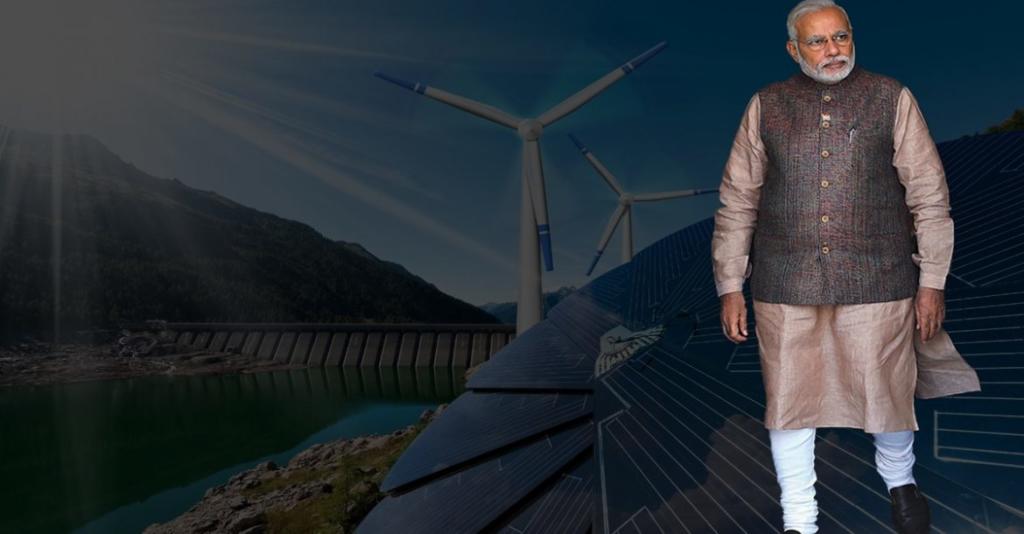Since Modi government came to power, one sector results that surprised everyone is the renewable energy sector. It grew at exponential rate and the energy production surpassed the estimated target. The country is third largest solar power market and has fourth highest wind power capacity in the world. As per a report by India Brand Equity Foundation (IBEF), the sector received total investment of 7.48 billion dollars in last 18 years from April 2000 to December 2018. The total investment in clean energy is estimated at 11.1 billion dollars for the calendar year 2018, according to data from Ministry of Renewable Energy and consultancy firm KPMG.
Modi government liberalized the FDI in renewable energy to 100 percent through automatic route. The country aimed to achieve 175 Gw renewable energy capacity by 2022 with 100 Gw from solar installations and 60 Gw from wind installations. But the progress made on renewable energy front was very little under 10 years of UPA government. After the Modi government came to power, the sector picked up one again. RK Singh led Ministry of Renewable Energy (MRE) has revised the target of 175 GW renewable energy generation by 2022 to 227 GW. “The target for 175 GW renewable energy capacity addition is not being revised, we will be ‘overachieving’ the target,” said R K Singh.
The replacement of coal fired power plants with renewable power like wind or solar would save 54,000 crore rupees annually given the shrinkage in power costs. The contribution of the new energy in total installed capacity increased by 8.2 percent in last five years of Modi government, as per data from IBEF. “Over the last few years, there has been an increase in percentage contribution of renewable energy to total installed capacity. In 2013-14 the contribution was 12.92 per cent which has increased to 21.21 per cent by December 2018”, said IBEF. The new target for 2022 in different renewable energy sectors is as following.
The largest growth in renewable energy generation is in the sector of solar energy which has grown nine times in the last four years. The solar industry is expected to benefit further from the reforms in China which announced last year that they would cut the subsidies to developers and halt the approvals of new solar projects to ease its pace of expansion. This will result in lower demand in China, which is the biggest market, and therefore, producers in the country will be forced to look for alternate foreign markets. This will bring the prices of photo-voltaic cells to a significantly lower level.
India has made a great leap forward in the energy sector under the Modi government, as all the villages of India are electrified and its renewable energy sector has attracted investment of 42 billion dollars in FY 14- FY 18. An analysis by International Renewable Energy Agency (IRENA) says that the renewable energy sector created 47,000 new jobs in the country in 2017, accounting for over 20 percent of 5 lakh new green jobs created globally.
Energy use in India has almost doubled since 2000, although per capita consumption is only around a third of the global average. Three-quarters of its energy demand is met by fossil fuels, a share that has been rising as households move away from the use of solid biomass (mainly fuel wood) to liquefied petroleum gas (LPG) for cooking. The growth in energy consumption is very important as it is one of the indicators of economic development. If the growing energy demand is met through fossil fuels, then it would be very harmful on the environment and on human health. Therefore, it is very important that investment in renewable energy gets prioritized.
